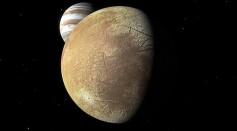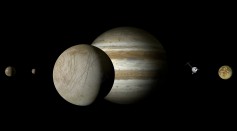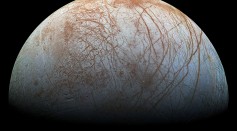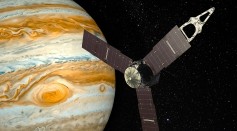Europa
Probing Europa: NASA's Instrument Set To Detect Potential Signs of Life on Jupiter's Icy Moon
NASA's Europa Clipper: Enchanting Poetic Tribute and Millions of Names Set to Embark on a Journey to Jupiter's Mysterious Moon
Europa's Alien Life Prospects Dwindle: NASA's Juno Mission Reveals Jupiter's Moon Holds Limited Oxygen
Jupiter’s Moon Europa May Hold Carbon in Ocean Beneath Its Icy Shell [Study]

Swimming Microbots To Join the Main Mothership Robots in Exploring the Oceans of Jupiter’s Europa
Europa’s Interior Suggests Slow Evolution, Possibly Habitable Environment for Alien Life
Jupiter’s Ocean Moon Europa Lacks Fully Formed Metallic Core [Study]

Aurorae Spotted on Jupiter's Four Largest Moons; How Is It Possible?

Aliens in the Solar System? Saturn's Enceladus and Titan, Jupiter's Europa Are Likely Habitats, Scientists Say

Comet Strikes on Jupiter's Europa Could Have Delivered Ingredients for Its Hidden Ocean, Study Reveals

NASA Juno Spacecraft Finds Scarlet Moon Near Jupiter

NASA's Juno Spacecraft Captures Jupiter Moon Io, Revealing An Incredible Detail of Its Volcanically Active Surface

NASA Juno Spacecraft Completes Flyby to Jupiter's Icy Moon Europa

Juno Spacecraft Set To Make Its Closest Approach to Europa As Part of the Mission of Looking for Liquid Water
Most Popular

How Technology Is Changing the Real Estate Industry?

How a Plant-Based Diet Can Protect Against Breast Cancer: Insights from Nutrition Research

Study Reveals High Turnover in Scientific Research Careers: What This Means for Future Scientists

Nikolay Karpenko Biography, Photo, Career, Accomplishments





